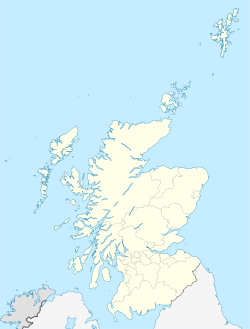History
The Dun Estate was home to the Erskine (Kennedy-Erskine from 1824) family from 1375 until 1980. John Erskine of Dun was a key figure in the Scottish Reformation. The current house was designed by William Adam and was finished in 1743. (Work had commenced in 1732.) There is elaborate plaster-work by Joseph Enzer, principally and most elaborately in the saloon. The house replaced the original 14th-century tower house to the west when David Erskine, Lord Dun, the 13th Laird of Dun, [2] an Edinburgh lawyer appointed Lord of Justiciary in 1710, wanted a more comfortable and prestigious home. He opposed the union.
It continued as the home to the Erskines for a further 250 years, undergoing some internal re-modeling when Lady Augusta Fitzclarence, natural daughter to William IV (previously the Duke of Clarence) and his long term mistress, Dora Jordan, married the Honourable John Kennedy Erskine, heir to the property through his mother Margaret Erskine of Dun. When they married they moved to the property and Augusta set about making several alterations, modernizing the property. The writer and poet Violet Jacob (1863–1946), author of Flemington and Tales of Angus, was a member of the Kennedy-Erskine family and was born in the house.
The last Laird of Dun was Millicent Lovett. She moved out of the house to an estate house "temporarily" in 1948, moving all the furnishings and artifacts up into the attic. The rest of the house was leased to a local farming family who ran it as a bed and breakfast establishment for many years. Millicent never returned to the house and on her death in 1980 it was bequeathed by her to the National Trust for Scotland. The Trust discovered all the original furnishings in the attic and spent nine years returning the house to the state it had been in at the time of Augusta. In 1989, the house opened to the public, the Queen Mother presiding to mark the tercentenary of William Adam's death.
The adjacent Montrose Basin nature reserve, part of the estuary of the South Esk, is also a National Trust for Scotland property.
This page is based on this
Wikipedia article Text is available under the
CC BY-SA 4.0 license; additional terms may apply.
Images, videos and audio are available under their respective licenses.

